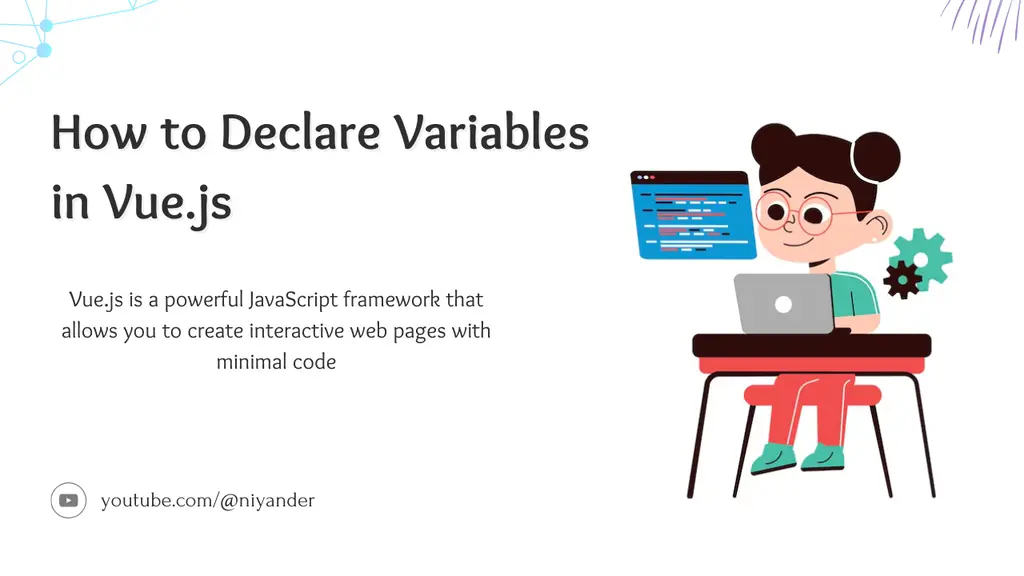How to Declare Variables in Vue.js
In this article, I will walk you through the process of How to Declare Variables in Vue.js using a few quick and straightforward steps. Whether you are a beginner exploring Vue.js or looking for an easy way to understand its basics, this tutorial will help you get started and integrate Vue.js seamlessly into your project.
If you are using Vue.js via a CDN, declaring variables is straightforward. In Vue 3, variables are defined inside the data() function within the createApp() method. Vue supports various data types like strings, booleans, arrays, and objects. Here’s how to declare them:
Basic Example
Here is a simple Vue 3 example using a CDN:
<!DOCTYPE html>
<html>
<head>
<title>Vue 3 Example</title>
<script src="https://cdn.jsdelivr.net/npm/vue@3/dist/vue.global.js"></script>
</head>
<body>
<div id="app">
<p>String: {{ message }}</p>
<p>Boolean: {{ isVisible }}</p>
<p>Array: {{ items }}</p>
<p>Object: {{ user.name }} ({{ user.age }} years old)</p>
<button @click="toggleVisibility">Toggle Visibility</button>
</div>
<script>
const app = Vue.createApp({
data() {
return {
// String
message: "Hello Vue 3",
// Boolean
isVisible: true,
// Array
items: ["Apple", "Banana", "Orange"],
// Object
user: {
name: "John Doe",
age: 30
}
};
},
methods: {
toggleVisibility() {
this.isVisible = !this.isVisible;
}
}
});
app.mount("#app");
</script>
</body>
</html>Explanation of Variables
- String: A text-based variable like message.
- Boolean: A true or false value like isVisible.
- Array: A list of items, declared as items.
- Object: A key-value pair structure like user with properties name and age.
How It Works
- String (
message): Displayed using{{ message }}. - Boolean (
isVisible): Can be toggled using a method liketoggleVisibility. - Array (
items): Displays the entire array content. - Object (
user): Access properties using dot notation, e.g.,user.name. @clickEvent: Binds a click event to call thetoggleVisibilitymethod.
Output
- String: Displays “
Hello Vue 3“. - Boolean: Initially
true, but can toggle betweentrueandfalsewhen clicking the button. - Array: Displays
["Apple", "Banana", "Orange"]. - Object: Displays “John Doe (30 years old)”.
Note: If you want to learn more about Vue.js click here
Summary
Vue.js makes it easy to declare and use variables of different types:
- Strings for text values.
- Booleans for conditions and toggles.
- Arrays for lists of items.
- Objects for structured data.
- With Vue 3 and a CDN, you can quickly create dynamic and reactive user interfaces by declaring variables inside the data() function.
Read Also: How to Add Vue.js to an HTML Page
Conclusion
Using Vue.js with a CDN is a quick way to start building interactive applications. By understanding how to declare variables like strings, booleans, arrays, and objects, you can make your web pages reactive and dynamic. Vue 3’s simplicity and flexibility make it an excellent choice for both beginners and experienced developers looking to enhance their HTML-based projects.

